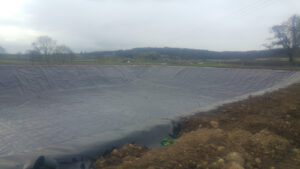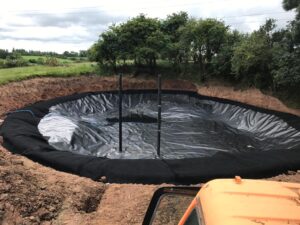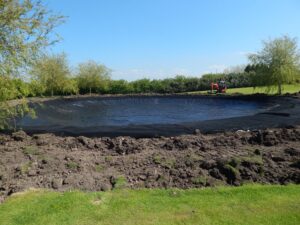In the realm of water management, balancing ponds stand as unsung heroes, quietly playing a pivotal role in maintaining equilibrium between development needs and environmental preservation. These ponds, though often overlooked, serve a crucial purpose in managing stormwater, preventing flooding, and nurturing local ecosystems.
Understanding Balancing Ponds:
Balancing ponds are artificial reservoirs strategically designed to collect and manage excess rainwater or surface runoff from urban areas, roads, and developments. Their primary function is to regulate water flow, mitigating the risk of flooding and allowing gradual release of water into natural watercourses or drainage systems.
Managing Stormwater:
One of the primary roles of these ponds is to act as a buffer against heavy rainfall or storms. By collecting excess water, they help prevent overwhelming drainage systems and subsequent flooding in urban areas. This proactive approach aids in safeguarding communities and infrastructure from the destructive impact of floods.
Conserving Water Resources:
Balancing ponds contribute significantly to water conservation efforts. By collecting and storing rainwater, they offer a sustainable source for irrigation, replenishing groundwater, and supporting local ecosystems. This plays a crucial role in reducing dependency on potable water for non-potable purposes, conserving this precious resource for essential needs.
Supporting Biodiversity:
These ponds are not just utilitarian; they serve as habitats for diverse flora and fauna. The tranquil environment created by balancing ponds attracts wildlife, fostering biodiversity in urban areas. Plants, aquatic organisms, and even some species of birds and insects thrive in these environments, enriching local ecosystems.
Professional Design and Construction:
The design and construction of balancing ponds involve a multidisciplinary approach. Engineers, environmentalists, and landscape architects collaborate to create ponds that blend seamlessly into the surroundings while efficiently managing water. The layout considers factors such as water flow, sedimentation, and the types of vegetation to ensure optimal functionality.
Maintenance and Longevity:
Regular maintenance is essential to ensure the effectiveness of these ponds. Periodic checks for sediment buildup, monitoring of vegetation, and inspection of infrastructure such as outflow pipes and embankments are vital to guarantee their longevity and efficiency.
Community Benefits:
Balancing ponds offer tangible benefits to the communities they serve. Beyond flood prevention and environmental conservation, they provide aesthetic value, creating green spaces for recreation, relaxation, and fostering a sense of community cohesion.
Sustainable Development:
In an era where sustainable development is paramount, balancing ponds stand as exemplars of harmonising human needs with ecological considerations. Their integration into urban planning exemplifies a commitment to responsible growth and environmental commitment.
In summary, balancing ponds represent a symbiotic relationship between water management, conservation, and community well-being. Their multifaceted role in mitigating floods, conserving water, nurturing biodiversity, and enhancing urban landscapes underscores their significance. As cities evolve, the incorporation of these ponds into urban planning remains instrumental in fostering sustainable and resilient communities.
To find out more about our products and services and how we can help you, please contact us using the below –
Tel: 01695 228626
Email: enquiries@enviroseal.co.uk





